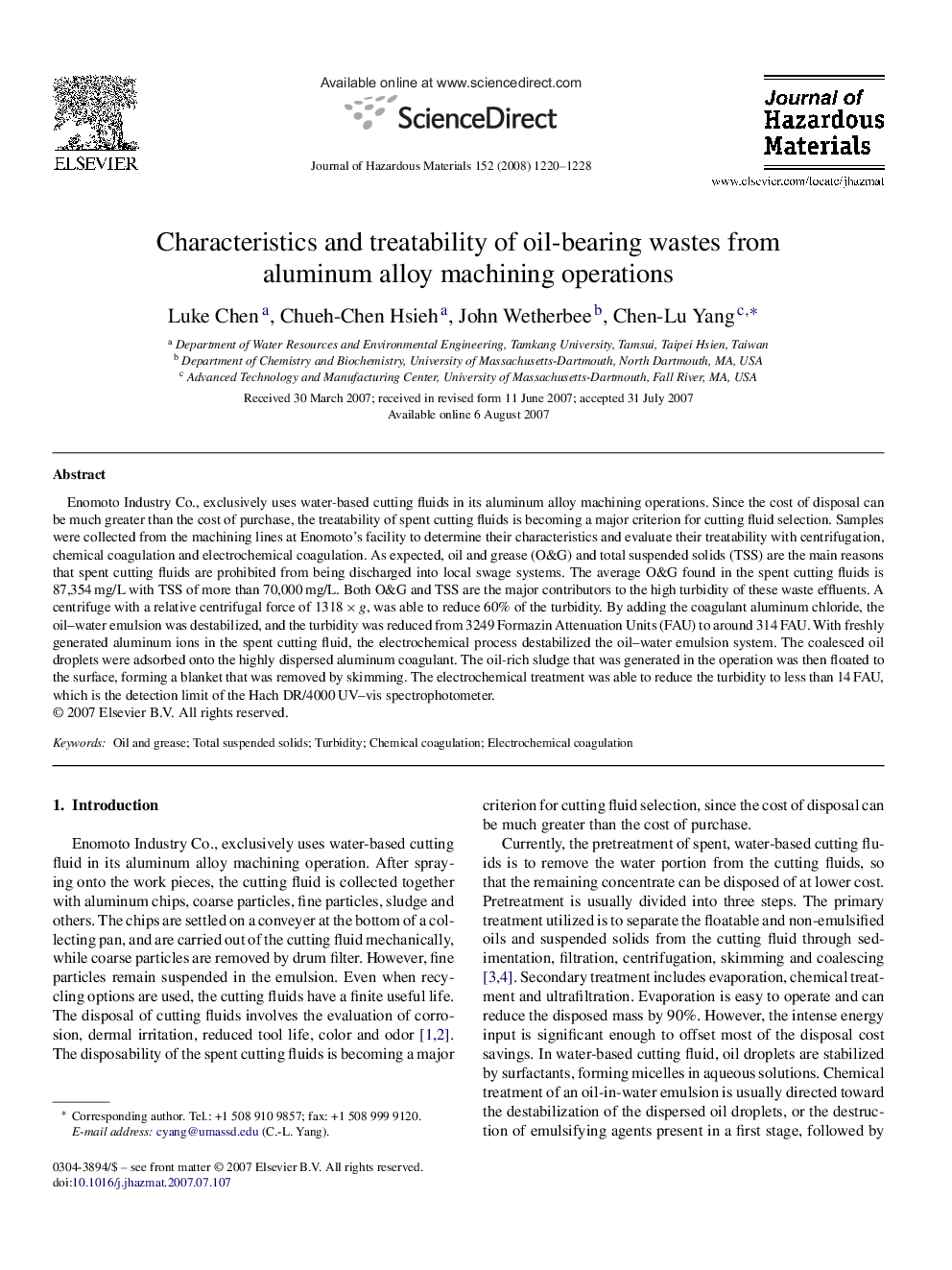| کد مقاله | کد نشریه | سال انتشار | مقاله انگلیسی | نسخه تمام متن |
|---|---|---|---|---|
| 583753 | 877876 | 2008 | 9 صفحه PDF | دانلود رایگان |
عنوان انگلیسی مقاله ISI
Characteristics and treatability of oil-bearing wastes from aluminum alloy machining operations
دانلود مقاله + سفارش ترجمه
دانلود مقاله ISI انگلیسی
رایگان برای ایرانیان
کلمات کلیدی
موضوعات مرتبط
مهندسی و علوم پایه
مهندسی شیمی
بهداشت و امنیت شیمی
پیش نمایش صفحه اول مقاله

چکیده انگلیسی
Enomoto Industry Co., exclusively uses water-based cutting fluids in its aluminum alloy machining operations. Since the cost of disposal can be much greater than the cost of purchase, the treatability of spent cutting fluids is becoming a major criterion for cutting fluid selection. Samples were collected from the machining lines at Enomoto's facility to determine their characteristics and evaluate their treatability with centrifugation, chemical coagulation and electrochemical coagulation. As expected, oil and grease (O&G) and total suspended solids (TSS) are the main reasons that spent cutting fluids are prohibited from being discharged into local swage systems. The average O&G found in the spent cutting fluids is 87,354Â mg/L with TSS of more than 70,000Â mg/L. Both O&G and TSS are the major contributors to the high turbidity of these waste effluents. A centrifuge with a relative centrifugal force of 1318Â ÃÂ g, was able to reduce 60% of the turbidity. By adding the coagulant aluminum chloride, the oil-water emulsion was destabilized, and the turbidity was reduced from 3249 Formazin Attenuation Units (FAU) to around 314Â FAU. With freshly generated aluminum ions in the spent cutting fluid, the electrochemical process destabilized the oil-water emulsion system. The coalesced oil droplets were adsorbed onto the highly dispersed aluminum coagulant. The oil-rich sludge that was generated in the operation was then floated to the surface, forming a blanket that was removed by skimming. The electrochemical treatment was able to reduce the turbidity to less than 14Â FAU, which is the detection limit of the Hach DR/4000Â UV-vis spectrophotometer.
ناشر
Database: Elsevier - ScienceDirect (ساینس دایرکت)
Journal: Journal of Hazardous Materials - Volume 152, Issue 3, 15 April 2008, Pages 1220-1228
Journal: Journal of Hazardous Materials - Volume 152, Issue 3, 15 April 2008, Pages 1220-1228
نویسندگان
Luke Chen, Chueh-Chen Hsieh, John Wetherbee, Chen-Lu Yang,